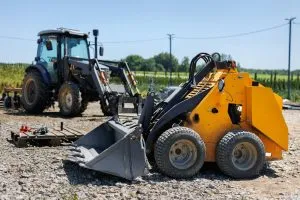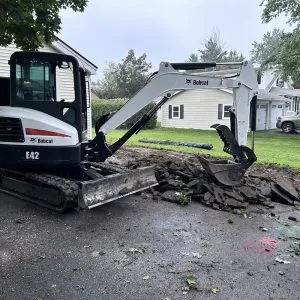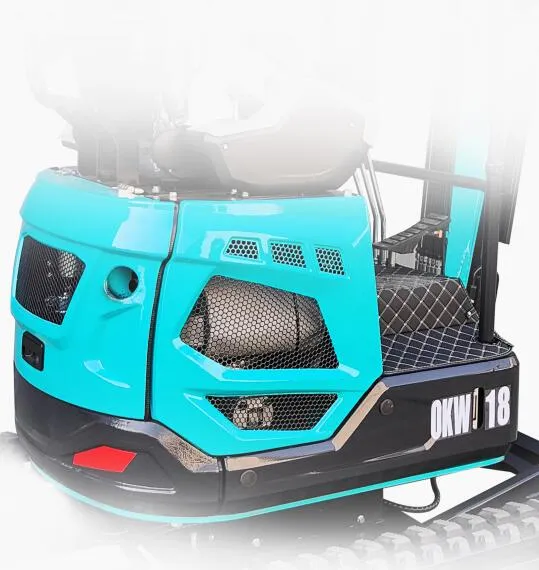Excavators are a crucial piece of equipment in the construction and mining industries, renowned for their versatility and efficiency in handling a wide range of tasks. Whether you’re breaking ground on a new construction project, engaging in demolition, or conducting heavy lifting, choosing the right excavator is vital. However, purchasing an excavator can be a significant investment, making it essential to ensure that you select the machine that best fits your needs. This article will guide you through some critical tips to consider when buying an excavator, ensuring that your investment is sound and your operational needs are met.

1. Understand the Types of Excavators
Excavators come in various types, each designed for specific tasks. Understanding the different types will help you choose the right machine for your needs:
- Standard Excavators: These are the most common, typically used for digging, material handling, and demolition.
- Mini Excavators: Smaller and more compact, mini excavators are ideal for tasks in tight spaces or where precision is required, such as urban construction or landscaping.
- Wheeled Excavators: Equipped with wheels instead of tracks, these are better suited for tasks on hard surfaces or when mobility between sites is necessary.
- Long-Reach Excavators: These have an extended arm and boom, making them ideal for tasks requiring a greater reach, such as dredging or deep excavation.
Tip: Assess the primary tasks you’ll be performing with the excavator and choose the type that aligns with those tasks.
2. Consider the Size and Weight of the Excavator
The size and weight of the excavator you choose will significantly impact its performance and suitability for your projects. Larger machines are generally more powerful and capable of handling heavier loads, but they also require more space to operate and may cause more damage to the ground.
- Mini Excavators: Typically weigh between 1-10 tons and are suitable for light-duty tasks.
- Medium Excavators: Weigh between 10-40 tons and are versatile, capable of handling a wide range of tasks.
- Large Excavators: Weigh over 40 tons and are used for heavy-duty tasks such as mining or large-scale construction.
Tip: Consider the weight and size based on the nature of your worksite. For instance, if you’re working in urban areas with restricted space, a mini excavator might be more suitable, while large projects might require a heavy-duty excavator.
3. Evaluate the Excavator’s Engine Power and Performance
The engine power of an excavator directly affects its performance. A more powerful engine allows the excavator to handle heavier loads, operate more efficiently, and complete tasks more quickly.
- Horsepower (HP): The horsepower of an excavator’s engine determines its ability to handle strenuous tasks. Higher HP means better performance, especially in demanding environments.
- Fuel Efficiency: With fuel costs being a significant operational expense, choosing an excavator with good fuel efficiency can save money in the long run.
Tip: Evaluate the engine’s horsepower in relation to the tasks you need to perform. If your operations require heavy lifting or digging through tough materials, a higher horsepower engine may be necessary.

4. Check the Hydraulic Systems
The hydraulic system is the backbone of an excavator, driving its various functions such as lifting, digging, and rotating. A robust and efficient hydraulic system is crucial for optimal performance.
- Hydraulic Flow Rate: This determines how quickly the hydraulic functions can operate. A higher flow rate means faster operation.
- Pressure Rating: Higher pressure allows the excavator to handle more demanding tasks.
- Auxiliary Hydraulics: These allow you to attach additional tools such as breakers or augers, enhancing the excavator’s versatility.
Tip: If you plan on using your excavator for a variety of tasks requiring different attachments, ensure the hydraulic system can support those attachments effectively.
5. Assess the Operator Comfort and Ergonomics
An excavator’s cab is where the operator spends most of their time, making comfort and ergonomics critical for long-term productivity and safety. A well-designed cab can reduce operator fatigue and improve efficiency.
- Visibility: Ensure the cab provides a clear view of the worksite, which is essential for safety and precision.
- Controls Layout: Intuitive and easily accessible controls can reduce the learning curve and increase productivity.
- Comfort Features: Look for features such as adjustable seats, climate control, and noise insulation to enhance operator comfort.
Tip: If possible, have your operators test the excavator’s cab to ensure it meets their comfort and ergonomic needs.
6. Examine the Undercarriage
The undercarriage supports the entire weight of the excavator and plays a significant role in its stability and mobility, especially on uneven terrain.
- Track Type: Excavators generally come with either steel tracks or rubber tracks. Steel tracks are durable and suitable for rough terrain, while rubber tracks are ideal for softer surfaces or urban environments.
- Track Tension: Properly tensioned tracks are crucial for reducing wear and tear, ensuring stability, and maintaining efficiency.
Tip: Consider the ground conditions of your worksite when choosing the track type and ensure regular maintenance to extend the undercarriage’s lifespan.

7. Consider the Excavator’s Attachments
Excavators can be equipped with a wide range of attachments, making them highly versatile machines. Common attachments include:
- Buckets: Used for digging and moving material, available in various sizes and shapes.
- Hydraulic Breakers: Ideal for demolition tasks, breaking up concrete or rock.
- Grapples: Used for handling debris, logs, or scrap materials.
- Augers: Useful for drilling holes into the ground for tasks like installing posts or planting trees.
Tip: Determine the attachments you’ll need for your specific tasks and ensure the excavator you choose can accommodate those attachments.
8. Investigate the Excavator’s Maintenance and Serviceability
Regular maintenance is essential for keeping your excavator in good working condition and extending its lifespan. When purchasing an excavator, consider:
- Ease of Access: Components like filters, fluids, and batteries should be easily accessible for routine maintenance.
- Service Intervals: Check the recommended service intervals and ensure they align with your operational needs.
- Dealer Support: A reliable dealer network is crucial for getting timely parts and service, reducing downtime.
Tip: Choose a brand with a strong reputation for reliability and support, and ensure you have a plan for regular maintenance.
9. Look Into the Total Cost of Ownership
The initial purchase price of an excavator is just one aspect of its total cost. Other factors include:
- Operating Costs: Fuel, maintenance, and operator costs can add up over time.
- Depreciation: Consider how quickly the excavator will depreciate and its potential resale value.
- Financing Options: Explore financing options to manage cash flow effectively.
Tip: Calculate the total cost of ownership over the excavator’s expected lifespan, not just the upfront cost, to make an informed financial decision.
10. Evaluate New vs. Used Excavators
Deciding whether to buy a new or used excavator depends on your budget, operational needs, and risk tolerance.
- New Excavators: Come with warranties, the latest technology, and no wear and tear, but they are more expensive.
- Used Excavators: More affordable but come with a risk of hidden issues and may require more immediate maintenance.
Tip: If buying used, ensure a thorough inspection by a qualified mechanic to avoid costly repairs.

11. Consider the Excavator’s Technology Features
Modern excavators often come equipped with advanced technology features that can enhance productivity and efficiency:
- GPS and Telematics: These systems can track the excavator’s location, monitor performance, and provide maintenance alerts.
- Automation Features: Some excavators offer semi-autonomous features that can assist with tasks like digging or leveling, reducing operator error.
- Safety Features: Look for features like rearview cameras, overload indicators, and enhanced stability controls.
Tip: Evaluate whether these technology features can add value to your operations, especially if you’re working on complex projects.
12. Understand Your Specific Job Requirements
Different jobs require different excavator capabilities. Consider:
- Digging Depth: Ensure the excavator can reach the depths required for your projects.
- Lifting Capacity: Check that the excavator can safely lift the loads you need to move.
- Working Radius: Make sure the excavator’s reach is sufficient for the tasks you’ll be performing.
Tip: Create a list of your project requirements and use it as a checklist when evaluating potential excavators.
13. Test the Excavator Before Purchase
If possible, arrange to test the excavator in conditions similar to your worksite. This will give you a better idea of how it handles real-world tasks and whether it meets your expectations.
- Check Maneuverability: Test how well the excavator maneuvers, especially in tight spaces.
- Evaluate Power and Speed: Ensure the excavator has the power and speed to perform the tasks you need.
- Assess Comfort and Usability: Make sure the controls are intuitive and the cab is comfortable.
Tip: Don’t rush this process—take the time to thoroughly test the excavator to ensure it’s the right fit.
14. Verify the Excavator’s Warranty and Support
Warranties can provide peace of mind, protecting your investment against unexpected issues. Consider:
- Warranty Coverage: Check what is covered under the warranty—engine, hydraulics, electronics, etc.
- Duration: Consider how long the warranty lasts and whether extended warranties are available.
- Support Network: Ensure there is a robust support network in place for parts and service.
Tip: Choose a brand with a strong warranty and reliable after-sales support to minimize downtime and repair costs.
15. Explore Financing and Leasing Options
Purchasing an excavator is a significant financial commitment. Consider financing and leasing options to manage cash flow:
- Leasing: Can be a good option if you need the excavator for a specific project and don’t want to commit to a long-term purchase.
- Financing: Look for financing options that offer favorable terms and interest rates.
Tip: Consult with financial advisors or your accountant to determine the best financing strategy for your business.

Conclusion
Buying an excavator is a substantial investment that requires careful consideration of various factors, from the type of excavator and its size to the hydraulic systems and total cost of ownership. By following the tips outlined in this article, you can ensure that you select the excavator that best meets your needs, providing reliable performance and value for years to come.
Remember to assess your specific job requirements, consider the total cost of ownership, and test the excavator in real-world conditions before making your final decision. With careful planning and research, you can make an informed purchase that supports your operational goals and delivers a strong return on investment.






